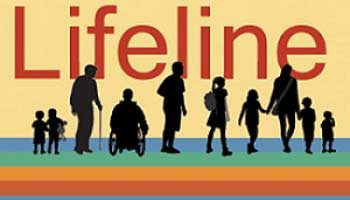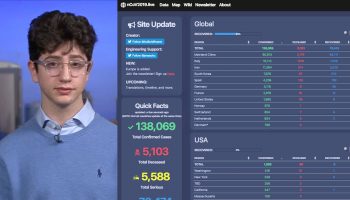The debate about how to deliver Internet service to the masses rages on. Our situation has greatly improved, with free WiFi in many hotspots, municipal access, and corporate access. However, many low-income families still lack affordable broadband Internet. While some may use their access for entertainment, or arguing politics on social media, it’s a serious issue for others.
If you’re out of work, or on a limited income, your need for Internet access may be even greater than the average person. Issues like limited transportation , no reliable childcare, or a handicap make it difficult to cover your basic needs.
Here are a few things a family can do with reliable Internet:
- Apply to jobs, work from home, or make extra income
- Pay taxes, bills, or deal with DMV issues
- Children’s homework and studies
- Online college courses and certification programs
- Healthcare advice, and communication
Providing Internet for low-income families is not like free healthcare. How it differs is that it is already in place for others in the area. And, it can be provided by free enterprise at a minimal cost to consumers who qualify. This makes it completely unnecessary for deep government oversight, or regulation. Additionally, once a customer signs up for a low-cost option the Internet provider can make that person a customer for life. We’ve seen similar programs with college students, and seniors, working very well.
In July 2015 Tom Wheeler of the FCC declared that broadband should be at a minimum of 25 Mbps download and 3 Mbps upload, up from the previous 4/1 standard. This standard is put in place as an attempt to gauge how much (or little) broadband is being deployed to the masses. No surprise what their findings show:
…broadband is not being deployed to all Americans in a reasonable and timely fashion, especially in rural areas, on Tribal lands, and in US Territories
However, having 25/3 broadband access is a very high-speed line. Therefore, the problem of our “digital divide” may be a bit overstated. There are choices now like DSL Internet that have sometimes up to about 8Mbs at very low cost, and can take care of your basic needs. I’ve always steered folks to DSL if they’re on a tight budget. DSL is easy to setup, and quality Internet speeds – especially in major cities.
Basic DSL Service
Although the speeds aren’t up to 25/3 standards the best deals are still with DSL Internet. This type of connection uses a home’s pre-existing phone lines to deliver the Internet signal. All it takes is the addition of a broadband modem. Some rural areas still don’t have DSL available, even though they have a phone line, so you’ll have to check with your local phone companies. The great thing about DSL is you can get the phone company to package it with your phone service to save even more money. This is offered to the public, with no qualifications necessary.
Here at ISPGenie.com we have several DSL Offers to choose from. The basic service rate starts at about $14.95/mo., with an additional cost per month for your phone service (since they’re packaged together). The best deals are usually from clicking the online links, but if you can’t find phone+DSL for less than $35/mo. you should call directly.
ConnectHome
As a way to help eliminate this so called “digital divide” many communities have started programs to help those in less-fortunate circumstances get online. A few such programs are only being adopted locally, while others are available nationwide. But, there are other ways to have great low-cost Internet if you’re on a budget.
Half of the households in the lower 20 percent of household income in the U.S. do not have access to the internet. To address this problem, President Obama unveiled ConnectHome on July 15, 2015 to several communities across the U.S. The program hopes to provide internet access to those who currently do not have a way to get online. Two hundred thousand children within those households do not have the online access they need to complete their homework.
CenturyLink, Google Fiber, and Sprint are helping the government carry out this initiative. Internet providers will use their existing networks to bring internet to residents in their service areas. Some will get access for free, while others will only need to pay a few dollars each month. Fees will vary based on internet providers and income requirements. You have to qualify for the service, and the fees may not be significantly different from DSL, however the line speed may be faster in some cases.
Local Programs In Your Area
While only parts of the country are participating in ConnectHome, local initiatives are starting up in several locations similar to those of the federal program. With the arrival of Google Fiber, many residents are aware of its Gigabit Communities Program to bring affordable internet to low-income residents in Fiber cities. However, additional internet service providers are making other programs available.
Internet Basics by CenturyLink
CenturyLink understands the importance of internet availability for everyone. Internet Basics provides 1.5 Mbps speeds for low income families for $9.95 a month. Along with more affordable internet, some households can also receive reduced home phone services if they qualify.
The plan comes with technical support available 24/7, a 30-day satisfaction guarantee or your money back, and parental controls to protect your children.
You likely qualify for CenturyLink’s program if you participate in other government assistance programs like public housing, Section 8 housing, food stamps (SNAP), Supplemental Security Income, National School Lunch or other programs offered through the state of Utah. If your income is under 135 percent of the Federal poverty level (150 percent or 175 percent in some states), then you are eligible for the program.
Internet Essentials by XFINITY Comcast
XFINITY’s Internet Essentials program provides affordable internet to eligible families and helps children access a world of education and opportunities they otherwise wouldn’t be able to receive. Households who meet the following criteria can sign up for Internet Essentials:
- Have one or more children qualifying to have the National School Lunch Program
- Possess no debt to XFINITY from the past 12 months
- Live in an area serviced by XFINITY
Residents not currently in areas serviced by these programs still have hope of gaining access to affordable internet in the near future as service providers like ConnectHome, Internet Essentials, and Google Fiber continue to expand availability.





